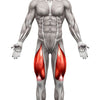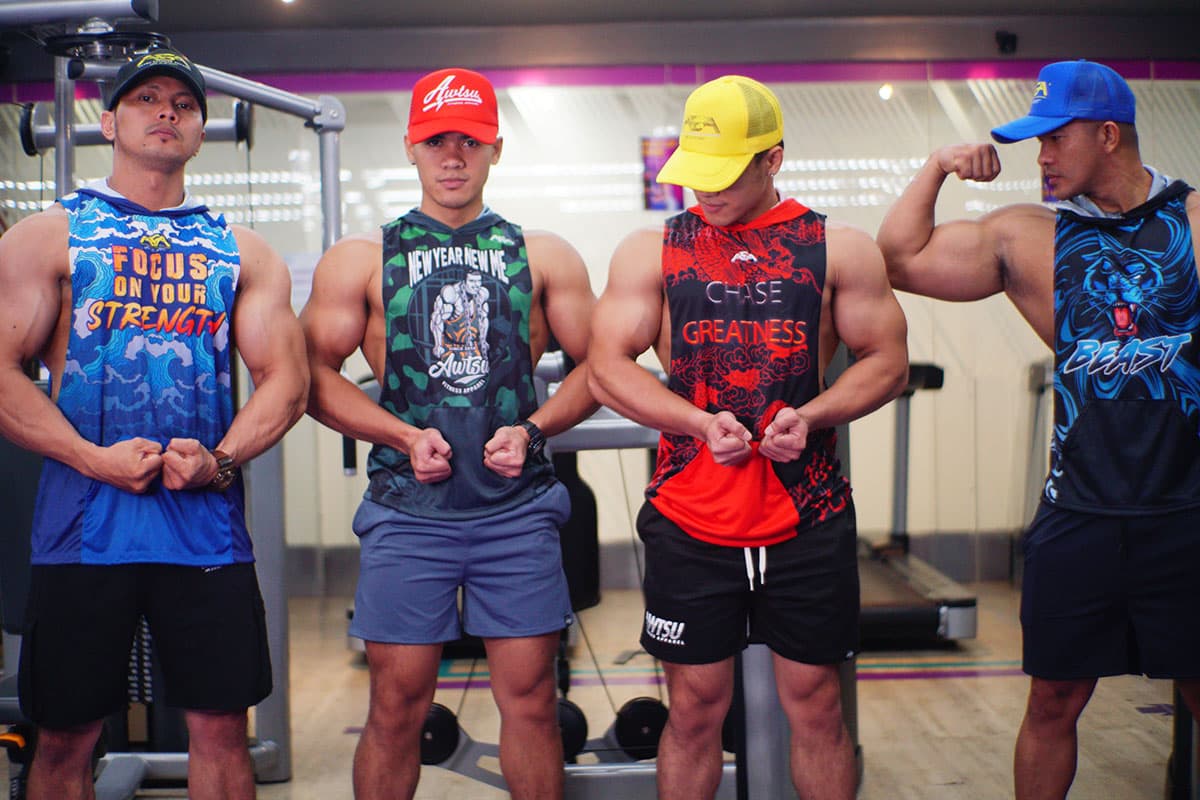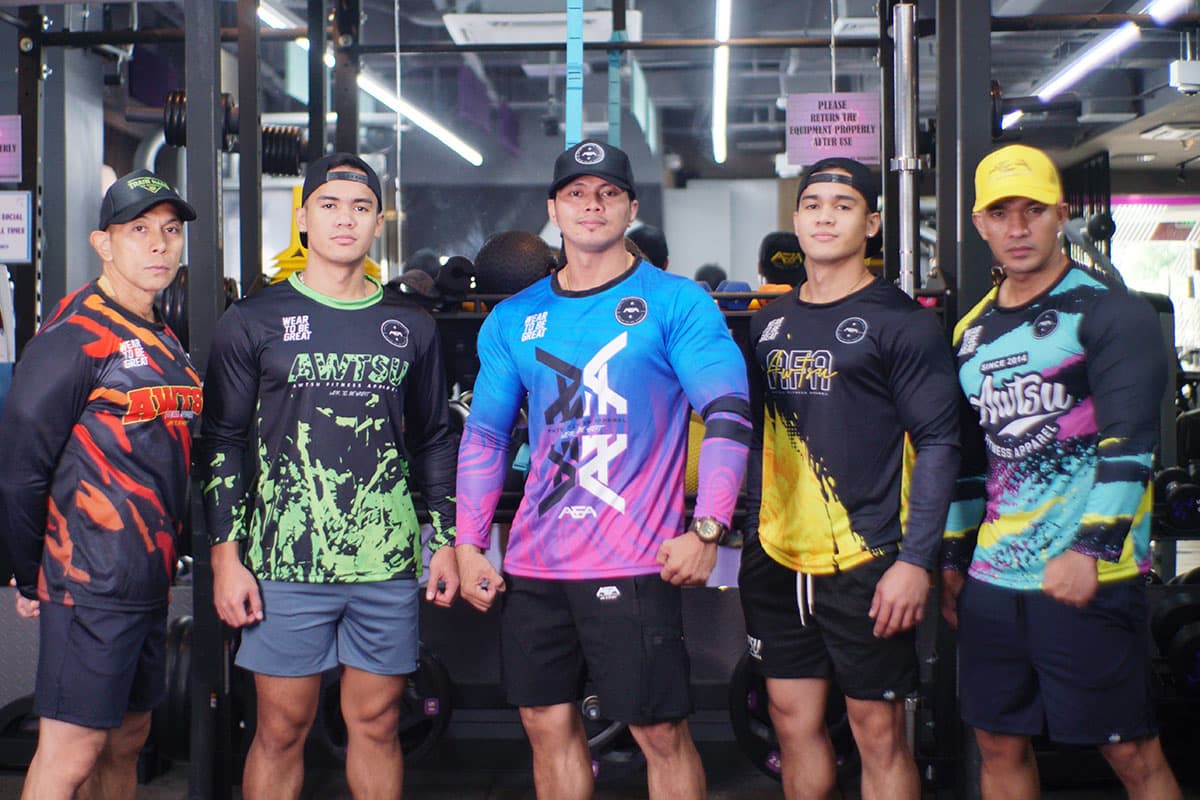It is not a surprise that a lot of people tend to skip leg day because (1) the leg muscles are so large, it takes longer to see results, and (2) no one enjoys the delayed onset muscle soreness, more often called as DOMS that tends to follow. However, no weight training plan is complete without at least one leg-focused workout a week.
Let’s take a look at the four major muscle groups that make up your legs:
-
Quadriceps
The quadriceps femoris, also known as “quads”, are the strongest and leanest of all muscles in the body and they help extend the knee which helps with walking, running and kicking. It is a group of muscles located in the upper front portion of the leg (thigh).
-
Hamstrings
The hamstrings are the muscles at the back of the quads that affect hip mobility and knee flexion. You usually feel the stretch on these muscles when you try to touch your toes while standing up or when you’re sitting down.
-
Calves
The calf muscles are important to your ankle, foot, and toes movement. Hence, working with this muscle group will help you maximize your running and jumping abilities.
-
Glutes
The gluteal muscles, or “glutes”, are a muscle group that makes up the buttocks. This muscle group plays an important role in maintaining your posture and avoiding lower back pain after hours of sitting.
More than working the four major muscles mentioned above, doing lower body exercises also work your core, improve your balance, and reduce joint pain, all of which are helpful in the long run.
Why You Shouldn’t Skip It
Let us discuss first why incorporating lower body workouts in your weekly workout routine is important. Lower-body muscles create a strong, solid foundation. They are an important aspect in building a whole-body fitness routine that helps in improving overall strength, stability, and speed.
Neglecting leg workouts won’t cause the muscles to turn into fat. However, over time, your muscle cells can shrink while your fat cells will enlarge. This can cause you to look and feel less fit and muscular. If you work your upper body more and pay less attention to your legs, you will likely end up with an unproportionate body.
With no to minimal equipment, I’ll be sharing some leg exercises you can do at home.
Squats
Squats are one of the standard leg strengthening exercises you can do. If you are a beginner, you can do it without equipment. Squats and their variations are the go-to stretches to get those thighs and glutes working hard. Squats can be difficult at first as sometimes you naturally want to bend your knees.
How to do a squat:

- Stand straight, a little wider than hip-width.
- Turn your toes slightly outwards and keep your hands to your sides.
- Engage your abs and core muscles to support your spine.
- Slowly lower your body, shifting your hips backward and bending your knees until your thighs are parallel to the floor. Exhale and slowly get back to the starting position.
- Try doing 8-12 reps.
When this movement gets easy, you can also explore the different variations of squats including split squats, sumo squats, and goblet squats that would help target the other leg muscles. you can use dumbbells, or even water bottles to add weight to your squats.
Lunges
There are a lot of lunges exercises you can do. Among these are the reverse lunges, lateral lunges, and curtsy lunges that target different muscles like your glutes and thighs, and work on your hips for more mobility.
Reverse Lunges
The reverse lunge allows your knee joint to more favorably respond to hip flexion.
How to do reverse lunges:

- Stand with feet shoulder-width apart, hands on your side, or placed on your hips.
- With your right foot, step back almost twice your normal stride length, landing with your heel up. Lower the back leg straight down until to the ground or close to, creating a 90-degree angle in the front leg.
- Push through your front leg to return to standing, bringing your right foot back in line with your left.
- Repeat on the left side.
Lateral Lunges
This variation targets your inner thighs, also known as the “hip adductors”, quads, and hips. Lateral lunges help develop balance, stability, and strength as you move your body side to side.
How to do lateral lunges:

- Stand shoulder-width apart with your back straight and your weight on your heels.
- Take a big step to the right, ensuring you keep your torso as upright as possible, lower until the knee of your right leg is bent at around 90-degree, keeping your left leg straight.
- Push back up and return to the starting position.
Curtsy Lunges
Curtsy lunges are great for strengthening and toning your glutes. Strong glutes prevent and relieve back and knee pain, as well as improve your posture. This exercise also sculpts and strengthens your hip adductors, quads, and hamstrings as well as improves hip stabilization.
How to do curtsy lunges:

- Stand with your feet hip-width apart, hands on your hips, or hands together near your core.
- Cross your right leg to the back of your left leg.
- Bend your knees until your left thigh is nearly parallel to the floor, keeping your torso upright.
- Return to start. Then repeat on the other side.
Deadlifts
Deadlifts are one of the most dreaded leg workouts at home. Why? The deadlift uses your hamstrings, quads, glutes, and lower back muscles. If you are not so flexible, you might feel the burn on your hamstrings when you do this exercise, giving a high possibility you might feel soreness a day or two after the workout. Learning how to deadlift with good form will be beneficial in helping you carry items with less risk of injuries in daily life.
For this exercise, you may choose to do it with or without weights. You can even do it using resistance bands.
A few tips on deadlifts:

- Stand with your feet shoulder-width apart, knees slightly bent.
- Grip your weight or band shoulder-width apart, keeping your spine in a neutral position, and engage your core.
- Pull the weight upward. Take a deep breath, hold it and stand up with the weight.
Takeaways
Don’t neglect to train your leg muscles along with your upper body regularly to gain strength and improve overall fitness. Be patient as it may take anywhere from a few weeks to a few months to see and feel results. You must continue to keep up with your fitness plan even after seeing these results and achieve your fitness goals. Remember to warm up before doing strength or weight training, practice good form, and recover well.











Hi Team,
i am Ajay from Delhi India...